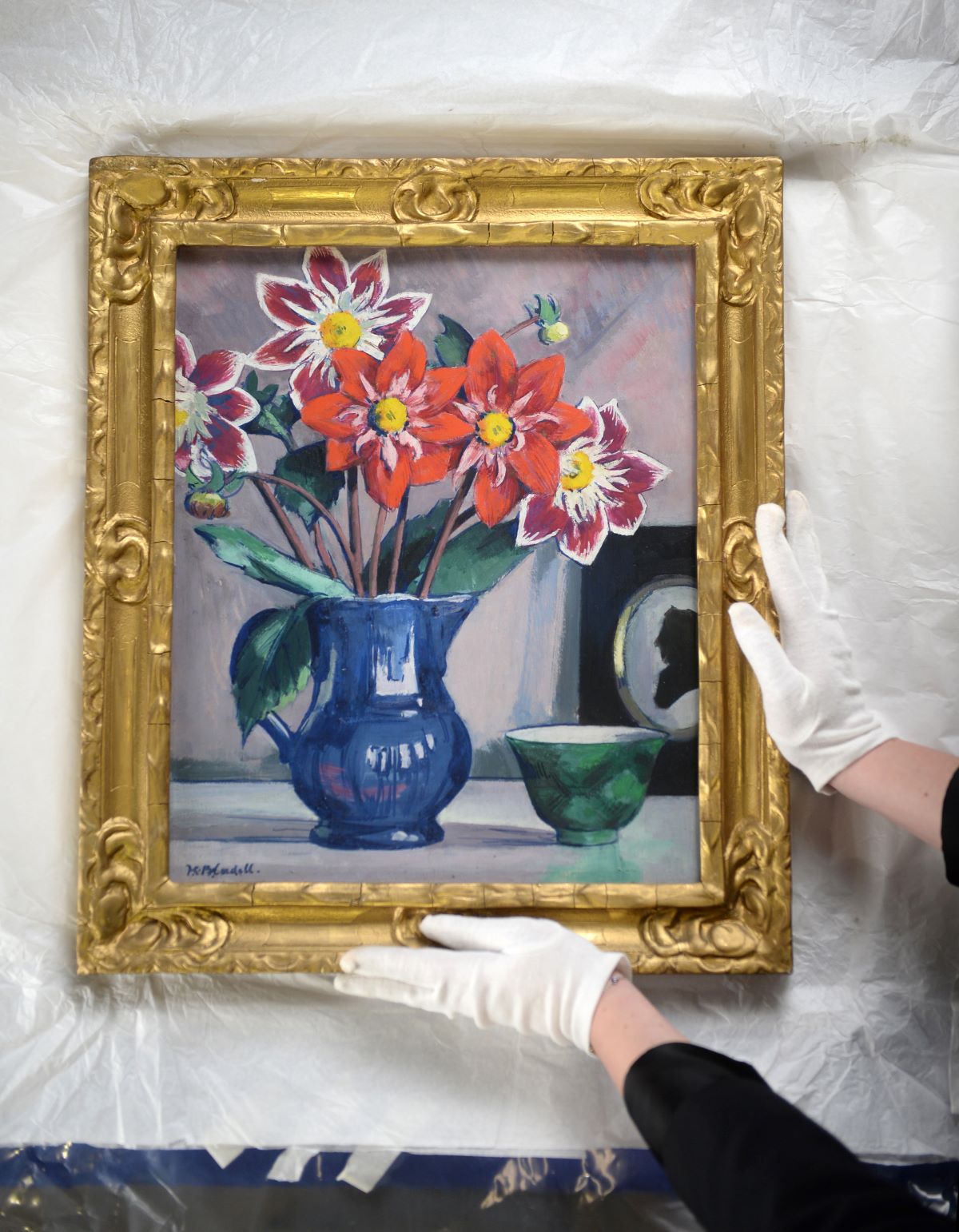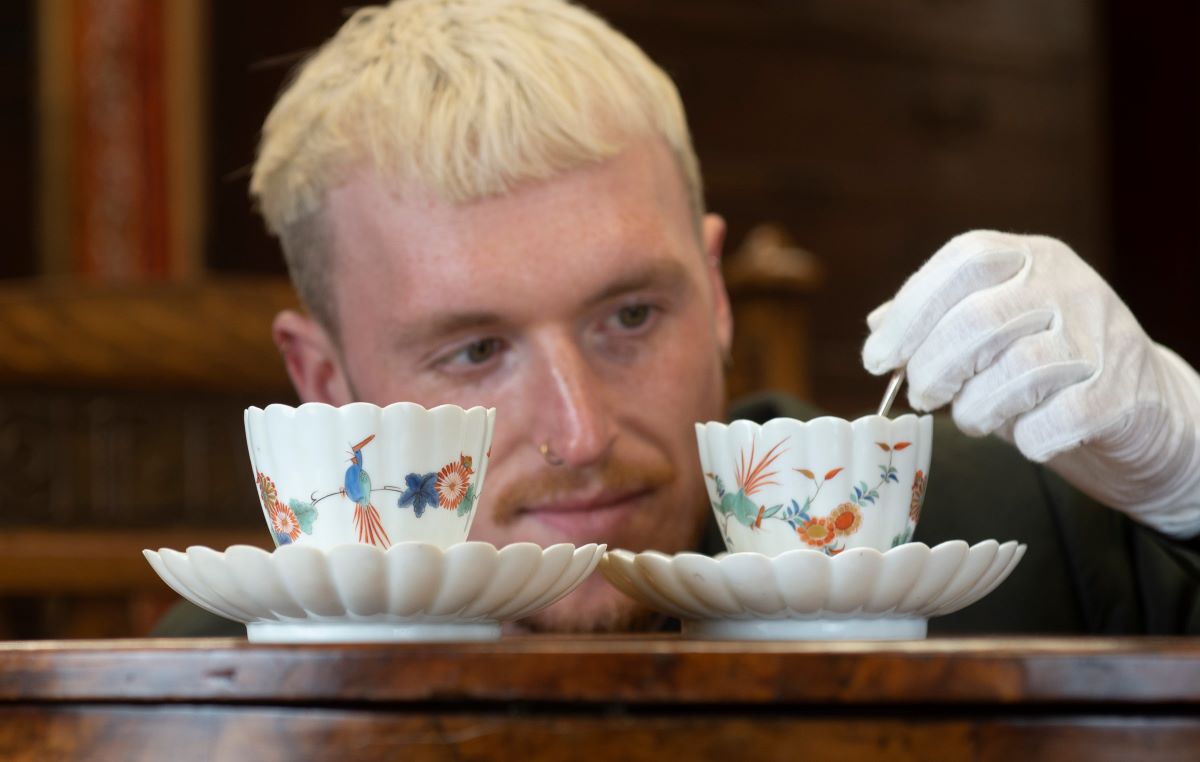
Great Western Auctions: Francis Cadell painting, rare teabowls and Doctor Who Dalek under the hammer
Great Western Auctions Fine Art and Antiques auction will be held on 22 and 23 March, with some unusual items going under the hammer.
Francis Cadell
A painting by Scottish Colourist Francis Cadell from 1929 could fetch £200,000. The picture comes to the market from a private collection on the Isle of Jersey.
It once hung in the home of ophthalmologist Dr Arthur Sinclair at 6 Charlotte Square in Edinburgh, which is now Bute House.
It is thought to have been acquired directly from Cadell by Sinclair’s artist brother who was a fellow member of the Society of Eight.
Cadell’s still life work from the 1920s is very distinctive, with a taut linear style and vibrant colour.

The painting could fetch £200,000. Credit: James Chapelard
As here, they generally feature a bold spray of flowers arranged alongside favoured studio props such as the blue jug, green bowl and his lilac studio wall.
‘The four artists who have become known as the Scottish Colourists played a unique role in Modern British art in the early 20thC, not least as a direct link with the cutting edge of avant garde art and modernism in Paris,’ said Anita Manning from Great Western Auctions.
‘They also introduced the still life theme, which in large part accounts for their international reputation and ongoing success in the marketplace. These pictures are accessible, timeless, recognisable and have a universal appeal.’
Meissen Kakiemon teabowls
A pair of Meissen Kakiemon teabowls and saucers from the 1730 that belonged to Augustus the Strong, who was the Elector of Saxony and the King of Poland, are also on offer.
The cups and saucers are from a collection of Augustus’ oriental porcelain which is housed in the Japanese Palace.
‘These rare Meissen pieces are recorded in the Tower Room Inventory of 1769 and bear their historic inventory number,’ said auctioneer and valuer Ruairi Barefoot,
‘Augustus’s passion for porcelain led him to pursue the secret of true porcelain manufacture and establish The Meissen Porcelain Factory in 1710.
‘Such was the beauty and quality of Meissen porcelain at that time, that it was known as White Gold.
‘Around 1730 the French dealer Rodolphe Lemaire ordered copies of East Asian porcelain from the Meissen manufactory.

A pair of Meissen Kakiemon teabowls and saucers from the 1730 that belonged to Augustus the Strong. Credit: James Chapelard
‘Many of them had the crossed swords mark applied over the glaze, which could be ground off later on with the aim of selling these pieces as East Asian originals for huge profits.
‘The affair resulted in a scandal. Confiscated as evidence, the porcelain ended up in the royal collection in the Japanese Palace.
‘In 1701, Frederick I The King of Prussia issued a demand for the extradition of a young alchemist, Johan Friderich Bottger, from Wittenberg to Berlin, as word had spread across the country that he possessed the knowledge of making gold by transmutation.
‘Augustus the Strong, elector of Saxony, refused to send Bottger to the King of Prussia, and instead imprisoned him in his palace to use him for his own gain.
‘After various failed experiments, in 1708 Bottger was successful, marking the birth of Hard-paste porcelain in Europe.
‘Augustus, wanting to monetise the discovery, opened the Meissen factory just two years later.’
Bottger died in his early 30’s shortly after his release due to the toll that working in the kilns had on his body.
The cups and saucers are expected to sell for £3,000.
Dr Who Dalek

A full sized Doctor Who Dalek. Credit: James Chapelard
A full sized Doctor Who Dalek is also for sale, with an estimate of £500-£800.
The Dalek was manufactured by This Planet Earth Ltd under an official licence from the BBC.
It is the perfect 1:1 scale replica of an individual Dalek featured in Remembrance of the Daleks, first broadcast in 1988.
In what is widely considered one of the finest plots in the Doctor Who canon. The Doctor and Ace travel back to 1963 to retrieve the Hand of Omega, a powerful device created by the Time Lords, preventing it from falling into the hands of the Daleks.
It is notable for being the final appearance of the iconic antagonists in the programme’s original run, as well as being the only time that Sylvester McCoy, in the title role, encountered them.
Read more News stories here.
Subscribe to read the latest issue of Scottish Field.
TAGS

